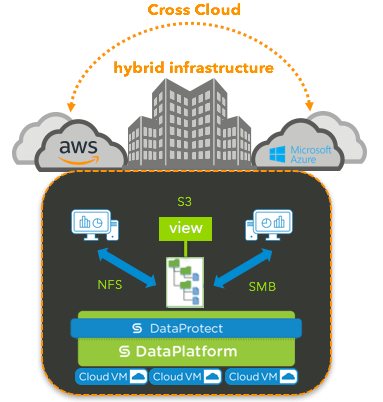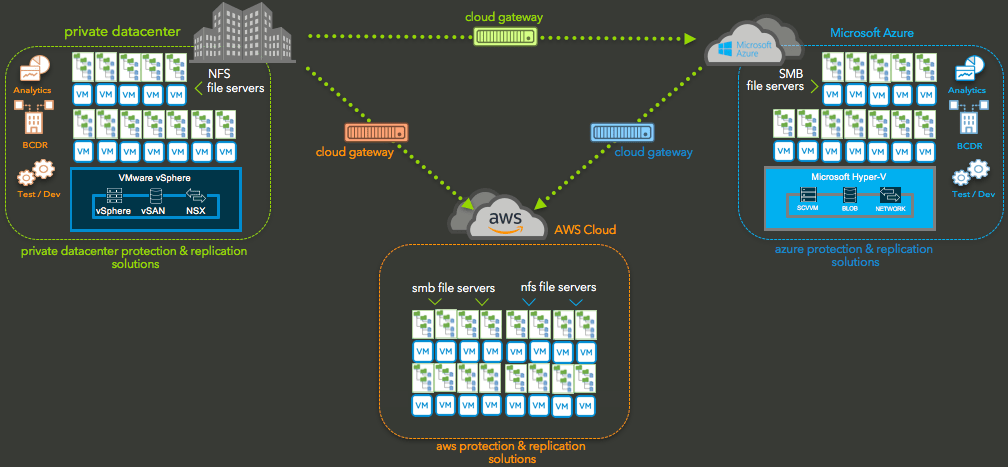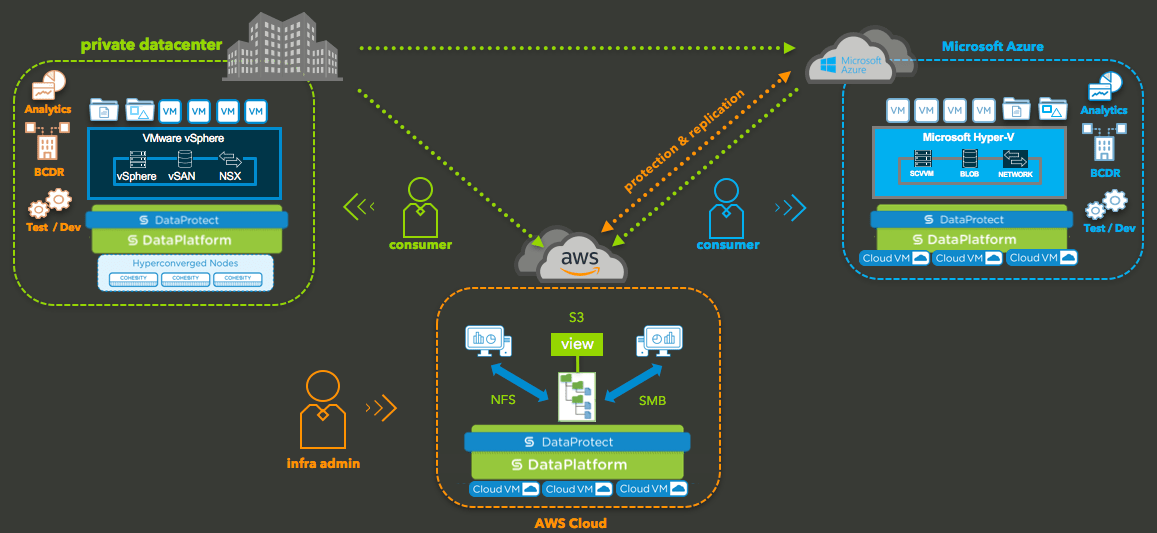Enterprise organizations have reached the point where having efficient access to information is just as important as the location where they store it.

We’re at the point where enterprise organizations, to remain competitive, need access their information anytime, anywhere.
Due to economic value, the use of public clouds – such as AWS (Amazon Web Services), Microsoft Azure, etc. – continues to grow and evolve beyond the use of long-term retention for information. Access, consumption, analysis, filtering, and processing are a few of the newly required capabilities today. Also important: computing models, such as edge computing.
At the same time, new requirements do not negate the need for traditional data management such as protection , preservation, mobility, etc.
The reality is, traditional data management solutions need to evolve and catch up with today’s business demands.
Part of the evolution revolves around technology; the other part is operational efficiencies, security, and risk-mitigating functions and capabilities.
Enterprise organizations need access to their data, regardless of whether it resides in a private cloud, or a public cloud such as AWS, Azure, etc. Access and storage requirements are based on performance needs, economic value, regulatory compliance, and risk assessment.
The Traditional Approach
Deploying and maintaining a variety of solutions to provide a single, standard service is unacceptable. Why? Moving data through multiple solutions exposes enterprises to multiple operational risks and inefficiencies. This can lead to significant financial losses, and potentially irreversible damage to any business.
Traditionally, enterprise organizations maintain different solutions for the different types of infrastructures they consume (private cloud or public cloud). Take, for instance, data repositories, which behave differently depending on where they reside: on-premises vs in a public cloud.
The correct approach for any organization depends on several things related to technology-specific qualities – architectures, protocols, storage abstractions, etc. Another factor is operations-specific attributes, such as management, integration, etc.
Let’s not overlook the fact that the most significant hurdle in the enterprise is NOT always technology. In reality, the 800-pound gorilla in the room is operations. Regardless of how advanced the technology may be, if it introduces complexity to the standard mode of operations, it will take longer to adopt and utilize because of the potential risks it will present.
See that complicated diagram above? It makes me wonder: Why use multiple products to provide a common data repository when there is a better, simpler, safer, operationally-efficient, and cost-effective way to do it?
This approach has proven to be messy, inefficient, and risky. It’s time for organizations to try a new class of products that offers advanced technology and operational capabilities, without compromise and complexities.
Take for example Cohesity’s DataPlatform, which can be deployed anywhere.
From data centers (core) cloud to the edge, DataPlatform is capable of providing data repositories that can span across all infrastructures. It provides the essentials of data management, ranging from data accessibility, simultaneous multi-protocol access, space efficiency, scalable architecture, mobility, and best of all, API-based integration with all cloud providers and virtualization platforms.
There’s no getting around it. Based on the challenges I’ve covered in this blog, all enterprise products and solutions should allow enterprises to embrace the transformation to hybrid operating infrastructures.
Demo Time
Below is a demonstration video that showcases the mixture and evolution of technology, integration, and operational capabilities for modern and risk-averse enterprises.
Find whatever product works to accomplish those necessary targeted goals. Pay attention to the details, and keep in mind that simple and efficient operating procedures mitigate infrastructure operating risks.
– Enjoy
For future updates about Hyperconverence, Cloud Computing, Networking, Storage, and anything in our wonderful world of technology be sure to follow me on Twitter: @PunchingClouds.


















